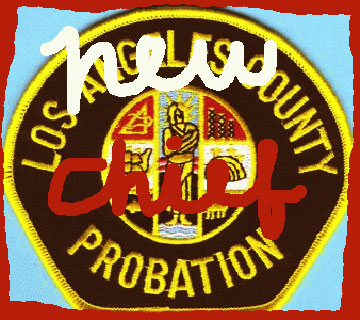
While none of LA’s newspapers have bothered to interview or profile Donald Blevens, the Alameda County Probation chief who will soon be taking over the LA County’s troubled Department of Probation, three of my Annenberg students managed to nab Blevins as part of their most recent round of crime reporting assignments.
One of those three is Sharis Delgadiillo, who chatted a couple of times with the newly appointed Blevins. A part of her account is posted on Neon Tommy.
Here’s a clip from the section in which Sharis asks Blevins about some of the methods he found successful during his stint in Alameda County.
….Blevins also attributes his success in Alameda County to a Juvenile Mental Health Court, where judges were familiar in dealing with kids with mental health issues.
“Kids with mental health issues are the fastest growing population in juvenile hall,” he said.
Blevins …focused on expanding services to sexually exploited minors, specifically young women, many of whom were sent to safe houses found in open settings and rural areas, rather than juvenile halls.
“There is a better outcome when you treat them more like victims than criminals,” he said.
Blevins says he is entering the new post confident in the L.A. County probation staff, despite a tarnished record that includes incidences of mistreatment to minors in the department’s custody.
“I hope I can lead them back in the right direction,” said Blevins.
We hope so too.

Um… what does this quote mean? Genuine question.
“‘Sometimes if you place more attention to the lower risk people, they might turn into a high risk,’ Blevins said. “
A very reasonable question. Sharis’s story was a bit truncated over at Neon Tommy.
Since I have seen a longer version of her article (which is what Sharis turned in to me) I think I can explain it in the context in which it was said.
But maybe Sharis will chime in and give a more complete answer.
What Blevins seemed to say in various ways is that it is important to differentiate between the kids who are genuinely high risk and the kids who have messed up in a far less serious fashion. Otherwise one may end up actually doing harm to the low risk kid, rather than helping him or her.
When Blevins applied that point to probation, he appears to be saying that if you slam a low-risk kid with very tight probation controls you have told him that you view him as untrustworthy and a criminal, rather than someone who has made a mistake and needs help (and some supervision) in order to get on the right track.
Studies show that, with kids especially, killing the mosquito with the Howitzer backfires as a strategy.
But it’s definitely a confusing quote.
(BTW, one of the perils of interviewing is that something that someone says can seem quite sensible in context because you are listening to the person’s tone of voice, affect and the totality of their point. But then when you transcribe a recording of a conversation the thing that seemed sensible in the context of their rambling, can suddenly turn into a mess when you try to extract short, usable quotes.)
thanks. I’d love even more specifics, but that clarifies the basic point.
I work in Juvenile Probation and know the research. Here is the point, peer to peer learning is so powerful that if you put a low risk youth into a detention program with high risk youth. One should expect that the low risk youth will become more like the high risk. It is rare that it would be the other way around. Remember your own teen years….it often was an exercise of “blending in” and the youth in the justice system do not fit in with many. The high risk lifestyle has more immediate rewards such as excitement, risk taking, getting away or being rebellious. Basically, low risk youth can be expected to reoffend 25% of the time, moderate risk 50% of the time and high risk 50-75% The highest risk of the high continually reoffend, but they are only the highest 3-5% of the probation population. When resources are tight, probation focuses on the highest risk with the most intense resources. Although popular with some, harsh treatment for low risk youth only reinforces the behavior by further isolating them from more healthy minded people. The moderate and lower risk should be given to community programming and kept away from the highest risk youth.